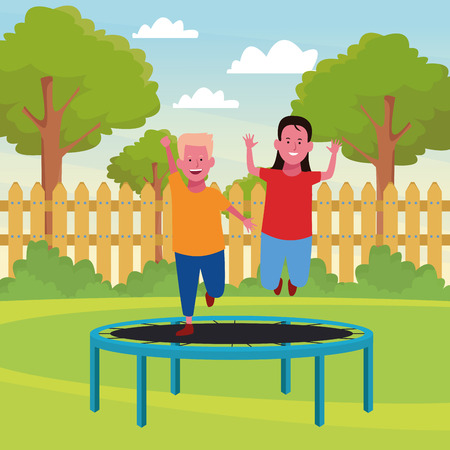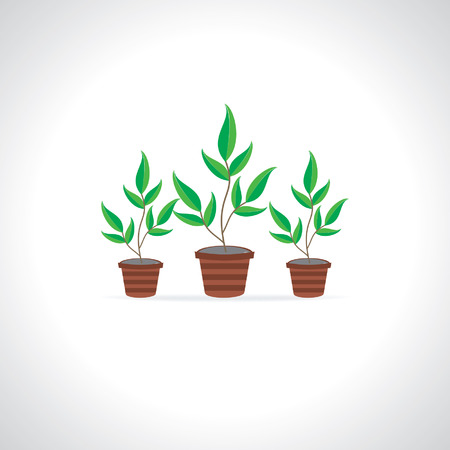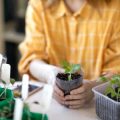1. Overwatering and Root Rot
New gardeners often assume that more water equals healthier plants, but overwatering is actually one of the most common and harmful mistakes. When soil stays too wet for too long, it can suffocate plant roots by pushing out the oxygen they need to survive. This sets the stage for root rot—a fungal disease that causes roots to decay, turning them brown and mushy instead of firm and white.
Why Overwatering Happens
It’s easy to want to “baby” your plants, especially when you’re just starting out. But plants don’t drink water the way people do—they absorb it slowly through their roots. If youre watering every day without checking the soil first, you might be doing more harm than good.
Common Signs of Overwatering
- Yellowing leaves
- Wilting despite wet soil
- Mushy or foul-smelling roots (if dug up)
- Mold or fungus growing on soil surface
The Role of Soil Type
In many parts of the U.S., especially in the Midwest and South, clay-heavy soil holds onto water much longer than sandy or loamy soils. This means plants in these regions are at greater risk for overwatering-related issues if proper drainage isnt considered.
Soil Drainage Comparison
| Soil Type | Drainage Speed | Overwatering Risk |
|---|---|---|
| Clay | Slow | High |
| Loam | Moderate | Medium |
| Sandy | Fast | Low |
How to Avoid Overwatering
- Check soil moisture: Stick your finger about an inch into the soil—if it feels damp, wait before watering.
- Use well-draining soil: Mix in compost or sand to improve drainage if your garden has heavy clay.
- Water less frequently: Deep watering once or twice a week is better than shallow watering every day.
- Avoid watering late in the day: Wet foliage overnight can lead to mildew and other fungal problems.
A little extra attention to how and when you water can make all the difference in keeping your garden healthy and thriving.
2. Watering at the Wrong Time of Day
One of the most common mistakes new gardeners make is watering their plants at the wrong time of day. While it might seem convenient to water during midday when youre already outside, this can actually do more harm than good.
Watering in the heat of the day—especially under direct sunlight—can lead to fast evaporation. That means your plants don’t get the hydration they need, and you end up wasting water. Even worse, droplets on leaves can act like tiny magnifying glasses, potentially scorching delicate foliage under intense sunlight.
Best Time to Water Your Garden
The optimal time to water your garden is early in the morning, ideally between 5 a.m. and 9 a.m. This gives your plants plenty of time to absorb moisture before temperatures rise. In hot and arid regions like Arizona or Southern California, morning watering is especially crucial because it helps plants stay hydrated through the hottest part of the day.
Why Morning Watering Works Best
| Time of Day | Pros | Cons |
|---|---|---|
| Early Morning (5 a.m.–9 a.m.) | – Less evaporation – Leaves dry faster, reducing disease risk – Soil absorbs water more effectively |
– Requires planning or automated systems if youre not an early riser |
| Midday (11 a.m.–3 p.m.) | – Convenient for some schedules | – High evaporation – Risk of leaf burn – Inefficient water use |
| Evening (after 6 p.m.) | – Cooler temperatures reduce evaporation | – Wet leaves overnight can encourage fungal diseases – Soil may stay too damp |
Tips for Better Timing
- If you cant water in the morning, late afternoon is your next best option—just be sure plants have time to dry before nightfall.
- Consider using a timer on your irrigation system to automate early morning watering.
- Avoid watering when it’s windy, as wind increases evaporation and makes distribution uneven.
By adjusting your watering schedule to the right time of day, youll help your plants thrive while conserving water—something that matters even more in drought-prone areas across the U.S.

3. Ignoring Soil Type and Drainage
Not all soil is created equal when it comes to watering. One of the most common mistakes new gardeners make is assuming that water behaves the same way in every garden bed. In reality, your soil type—whether its loamy, sandy, or clay—has a huge impact on how well your plants absorb water.
Why Soil Type Matters
Different soils have different textures and structures, which affect their ability to hold and drain water. For example, sandy soil drains quickly but doesn’t retain moisture well, while clay soil holds onto water too tightly, often leading to soggy roots and plant stress.
Common Soil Types and Their Watering Challenges
| Soil Type | Water Behavior | Gardening Tip |
|---|---|---|
| Sandy Soil | Drains too fast; doesnt retain moisture | Water more frequently but in smaller amounts; add compost to improve retention |
| Clay Soil | Holds water too long; poor drainage | Avoid overwatering; mix in organic matter to improve drainage |
| Loamy Soil | Balanced drainage and retention | Ideal for most plants; maintain with organic compost regularly |
The Role of Drainage
Poor drainage can be just as harmful as under-watering. Even if youre watering the right amount, waterlogged soil can suffocate roots and cause root rot. Make sure your garden beds or containers have proper drainage holes and consider raising beds if youre dealing with heavy clay soil.
Quick Tip:
If youre unsure about your soil type, do a simple jar test at home by mixing some garden soil with water in a clear jar. Let it settle overnight—the layers will show you the proportions of sand, silt, and clay.
4. Using the Wrong Tools or Techniques
One of the most common watering mistakes new gardeners make is using the wrong tools for the job. It might seem convenient to grab a high-pressure garden hose and spray everything down, but this method often does more harm than good. High-pressure spraying can damage delicate plants and fails to get water where it’s needed most—right at the base of the plant where the roots are.
Sprinklers might seem like an easy solution, especially for larger areas, but they tend to water leaves more than soil. This not only wastes water through evaporation but also increases the risk of diseases due to wet foliage. Instead, consider using more targeted watering methods that suit home gardens better.
Better Watering Options for Home Gardens
| Tool | Pros | Cons |
|---|---|---|
| Drip Irrigation | – Delivers water directly to root zones – Conserves water – Great for raised beds and rows |
– Requires setup – May clog if not maintained |
| Soaker Hoses | – Evenly waters entire bed – Easy to use – Affordable option |
– Less precise than drip lines – Can waste water if left on too long |
| Watering Can or Low-Pressure Hose Nozzle | – Good control over amount and placement – Ideal for small gardens or containers |
– Time-consuming for large areas – Requires manual effort |
Tips for Smarter Watering
- Always aim to water at soil level, not from above.
- Water early in the morning or late in the afternoon to reduce evaporation.
- Check soil moisture before watering—if it’s still damp a few inches down, skip it.
Choosing the right tools and techniques can make a big difference in your garden’s health. By focusing on watering efficiently and directly at the root zone, you’ll help your plants thrive and save water in the process.
5. Assuming All Plants Need the Same Amount of Water
One of the most common mistakes new gardeners make is thinking that all plants need to be watered the same way. It might seem easier to just water everything at once, but doing so can actually harm your plants more than help them.
Different types of plants have different water needs based on where they come from and how they grow. For example, many drought-tolerant native plants—especially those found in the American West—are adapted to dry conditions and don’t need much water. On the other hand, vegetables, tropical plants, or anything growing in containers usually require more frequent watering.
Understanding Plant Water Needs
To avoid overwatering or underwatering, its helpful to group your plants by their water requirements. Here’s a simple guide to get you started:
| Plant Type | Typical Water Needs | Examples |
|---|---|---|
| Drought-Tolerant Natives | Low | Lavender, Sagebrush, California Poppy |
| Vegetables | Medium to High | Tomatoes, Lettuce, Cucumbers |
| Tropical Plants | High | Ferns, Elephant Ears, Hibiscus |
| Succulents & Cacti | Very Low | Aloe Vera, Agave, Barrel Cactus |
Pro Tip for Beginners
If you’re not sure how much water a plant needs, check the plant tag or do a quick online search using its name. You can also feel the soil—if it’s still moist an inch below the surface, you can probably wait another day before watering again.
Key Takeaway:
Treat your garden like a group of individuals with different needs. Paying attention to what each plant prefers will help them thrive and save you time, money, and water.
6. Neglecting to Adjust Watering with the Seasons
One of the most common watering mistakes new gardeners make is sticking to the same routine all year long. But plants don’t need the same amount of water in every season. Watering habits should change with the seasons. What’s required in the summer heat is very different from what’s needed during a cool, wet spring or fall.
Why Seasonal Adjustments Matter
Plants grow at different rates depending on the time of year. In the spring and early summer, many plants are actively growing and may need more water. In contrast, during cooler months or when rain is more frequent, overwatering can become a problem. Not adjusting your watering schedule can lead to root rot, mold, or stressed plants.
General Seasonal Watering Guidelines
| Season | Watering Needs | Tips |
|---|---|---|
| Spring | Moderate | Check soil moisture regularly; rainfall may reduce need for supplemental watering. |
| Summer | High | Water deeply and early in the morning to prevent evaporation and stress from heat. |
| Fall | Low to Moderate | Reduce frequency as temperatures drop; monitor rainfall levels. |
| Winter | Minimal (for most plants) | If ground isn’t frozen, occasional watering may be needed for evergreen shrubs and trees. |
How to Know When It’s Time to Adjust
- Watch the weather: If it’s been raining consistently, cut back on watering.
- Feel the soil: Stick your finger about 2 inches into the soil—if it’s moist, wait before watering again.
- Observe plant behavior: Wilting leaves might mean too much or too little water—check soil conditions before reacting.
The Bottom Line
Your garden lives in real time—it changes with the temperature, sunlight, and moisture levels throughout the year. By staying flexible and adjusting your watering habits each season, you’ll help your plants stay healthy and thriving no matter what Mother Nature throws your way.


